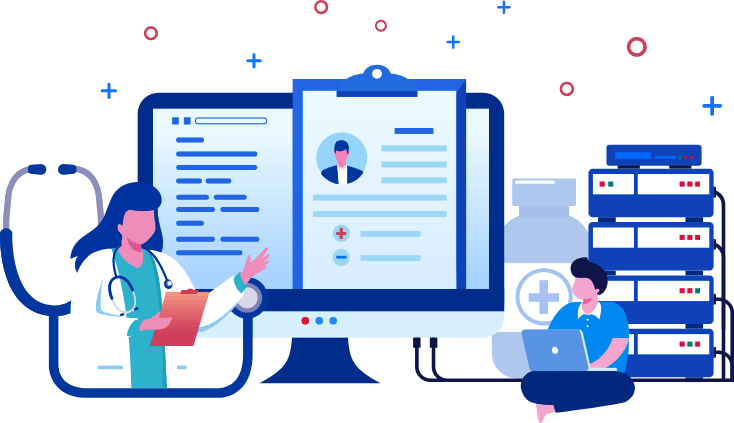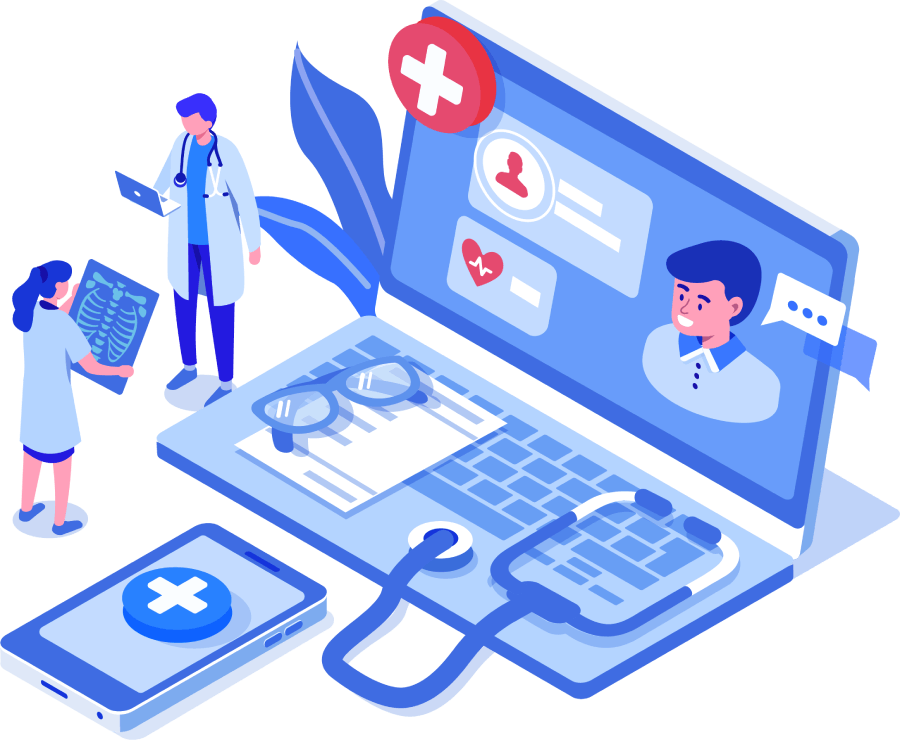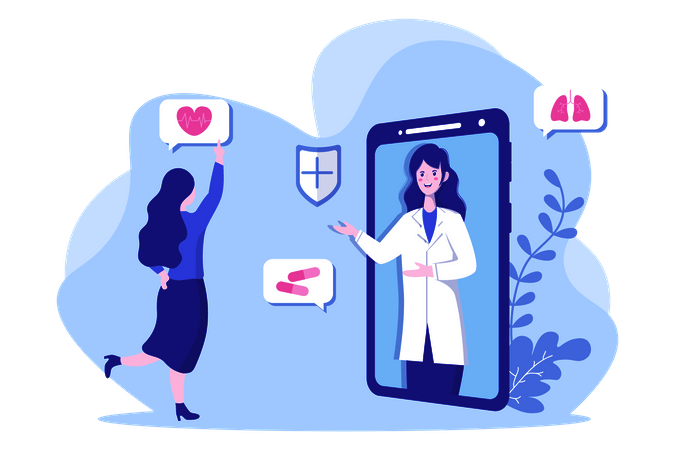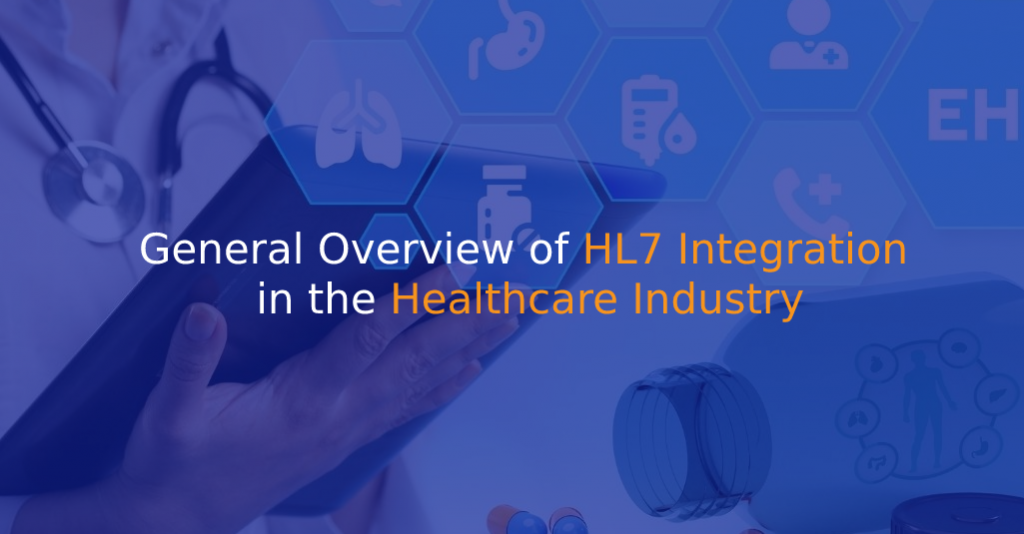If you’re not familiar with HL7, you’ve come to the right place. Let’s study everything we can about this virtual interface utilized in the healthcare business. HL7 assists healthcare companies in meeting their specialized demands, such as data sharing and integrated care management. The implementation of HL7 in healthcare has simplified the process and enabled new technologies.
So, What Exactly Does the HL7 Interface Imply?
HL7 is an international collection of standards that provides a network for sharing electronic health records (EHRs) amongst software platforms in the healthcare sector. In the field of healthcare information technology, HL7 standards have become healthcare standards. Health Level Seven International, a non-profit organization dedicated to providing a complete framework and standards for the exchange and retrieval of electronic data, founded HL7.
Many significant institutions in over 55 countries utilize it since they agreed on a uniform format for all sorts of patient data transmission. The American National Standards Institute (ANSI) recognized HL7 in 1994 to manage the standards produced by healthcare system stakeholders and vendors. Health level 7 standards provide data sharing formats and structures in clinical contexts.
HL7 Categories
HL7 standards are divided into four categories:
- HL7 version 2
- HL7 version 3
- CDA
- EHR-PHR
- FHIR
The most widely used communications protocol for the sharing of electronic health records is HL7 Version 2 (V2). It is a database query language that assists healthcare practitioners in sending messages that request and store patient data.
HL7 version 3 (V3) is also on the horizon, and it differs drastically from V2.

CDA (Clinical Document Architecture) is an ISO-approved standard that establishes a paradigm for exchanging clinical documents such as discharge summaries and progress notes.
The EHR-PHR System Functional Models provide standard language specifications for the development of EHR systems and their components.
Fast Health Interoperability Resources (FHIR) is a Web-based data exchange language that speeds up and simplifies interoperable healthcare applications.
More About HL7 FHIR
- FHIR is an acronym that stands for Fast Healthcare Interoperable Resource and is pronounced "fire."
- Unlike the HL7 standards, the FHIR standard was created specifically for the web.
- FHIR is a new and still-developing integration technique.
- HL7 FHIR combines the best features of HL7 versions such as HL7 V2, HL7 V3, and CDA.
- FHIR is built on modular components known as resources, which may be merged to solve clinical and administrative problems.
- By using a comparable architecture to other resources, healthcare systems may simply comprehend the expansions.
Some Significant Characteristics
The seven-layer International Standards Organization (ISO) Communications Model is represented by HL7:
- It links the entity to a transmission medium across the internet.
- Controls errors between neighboring nodes.
- Transfers data over a network.
- End-user communication control is provided.
- Apart from communication challenges, it addresses other issues.
- Converts data into a readable format for consumers.
- Provides several services to apps.
What Motivated the Development of HL7 in the First Place?

Previous difficulties
Previously, data transfer between different healthcare systems was accomplished using bespoke interface technologies. These connections need extensive programming at both the transmitting and receiving programs, complicating the process. Interface issues emerge when healthcare teams and software suppliers create new apps. Each of these apps is developed independently, with no input or collaboration from other application systems.
The innovation of HL7:
Some clinical interface professionals in the healthcare business chose to develop a more efficient and cost-effective method for interface applications. A voluntary organization of acute care hospitals and software companies collaborated to develop a common method of establishing interfaces. Their objective was to significantly cut the cost of creating interfaces. This is how the HL7 organization came to be.
The objective of HL7:
The fundamental goal of developing HL7 was to make it easier to create interfaces between healthcare software applications and multiple manufacturers. This would reduce the complexity and expense of bespoke interface programming to accommodate compatible apps. The emphasis was on making it customizable to simplify data transmission and greatly cut expenses. Implementing HL7 flexibly solved 80% of the clinical interface challenge.
An Example of Hl7 Integration
To get feedback from several hospital systems, a healthcare communications business used HL7 integration. The information comprised the EHR, patient care devices, laboratory, radiology, and nurse call systems, among other things. This information was delivered to healthcare teams using mobile devices such as cellphones and tablets.
What is the Role of HL7 in the Healthcare Sector?
Healthcare personnel is frequently required to navigate several electronic data systems to appropriately diagnose patients. If healthcare professionals offer services in outpatient clinics apart from the local hospital system, this procedure may become more complex. Clinicians benefit from FHIR and HL7 interoperability protocols, especially HL V2. These guidelines establish a uniform language for processing and transmitting patient data across EHRs, eliminating the possibility of misinterpretation or duplication.

What are the Benefits of HL7 Implementation?
HL7 has several benefits in addition to assisting you in optimizing and cost-effective EHR systems:
- Creates a single, adaptable, global standard for clinical data mobility.
- Allows for the simple sharing of complicated and private patient data, like as records, lab reports, and test results, via clinical apps.
- Facilitates electronic data interchange so that end users may analyze the data.
- Allows for integrated healthcare solutions, which improve the care services provided by healthcare networks.
- HL7 standards are prepared communications that facilitate various healthcare system connections and interoperability.
- These standards enable EHRs to interface with a wide range of systems that operate independently of the EHR.
How Can HL7 Help With EHR/EMR Interoperability?

Modern healthcare technology strives toward healthcare automation and data exchange at several points. Avoiding interoperability difficulties is one of the primary challenges in permitting secure and easy sharing of electronic health data.
Interoperability of electronic medical records (EMR) or electronic health records (EHR) will minimize medical mistakes, improve clinical performance, and increase patient access to healthcare. Data interoperability is essential for transmitting health data.
What is the Future of HL7?
- HL7 standards were developed to facilitate the integration of enhanced technologies for the conveyance of crucial information.
- HL7 integration is projected to boost the efficiency of each healthcare sector while decreasing the possibility of mistakes.
- HL7 will undoubtedly continue to promote technical developments like integrated healthcare. Healthcare providers, on the other hand, must guarantee that HL7 standards are HIPAA compliant.
- HIPAA compliance will improve as a result of the new EHR requirements, and healthcare facilities will have a more simplified workflow.
- HL7 will be acknowledged as a critical component of healthcare integration.
- Application development for both HL7 V2 and V3 standards.
Summary
Because HL7 standards improve the usability of integrated healthcare applications, the healthcare sector is changing. Health level 7 (HL7) promotes data interoperability and hence data exchange among various health professions. To ensure cost-effectiveness and efficacy in healthcare informatics, HL7 is required.
The introduction of healthcare APIs aids in the seamless operation of HL7-based applications. There are many varieties of HL7 standards, the most common of which is V2. Therefore, systems supporting both V2 and V3 may emerge. HL7 offers numerous advantages and critical applications, but it also has certain drawbacks. It is feasible to generate meaningful answers to challenges with proper planning and strategy in place.



